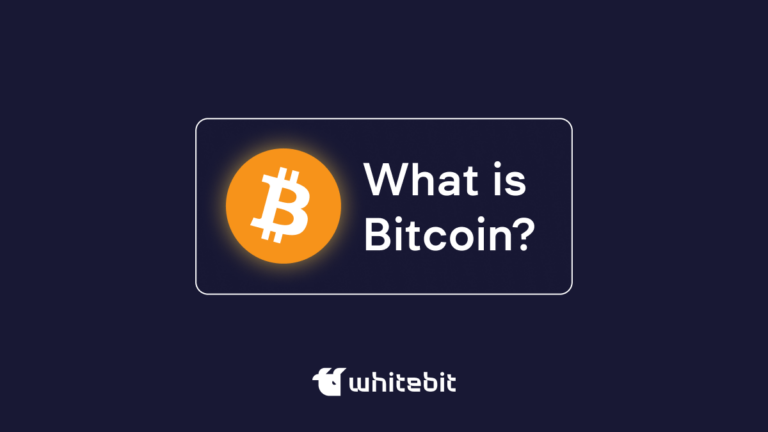Bitcoin Price History: 2009-2024

Content
When Bitcoin first began its existence in 2009, few could have predicted that its price would one day reach astronomical heights. From the first transactions where Bitcoins were exchanged for pizza to a price of $73,000 for a single Bitcoin. This digital asset has had a long and fascinating journey. Ups and downs, scandals and triumphs, acceptance and distrust – Bitcoin’s rise is full of dramatic events that have changed its value and the concept of money and financial systems. In this article, we explore the key moments of its price journey.
Bitcoin Price History Chart
For a clear understanding of Bitcoin price dynamics, look at the BTC/USDT price chart below, which covers the entire period from its inception to today. This chart illustrates how the history of bitcoin’s price reflects the impact of various factors such as institutional implementations, events in the crypto industry, altcoin exchange rate changes, and general market sentiment. By analyzing the data in the chart, you can better understand the volatility of this digital asset and buy crypto more informed.
Bitcoin Price History By Year
Bitcoin’s price history demonstrates the fascinating path that this digital asset has traveled since its inception. From the early days, when its value was practically zero, to modern times, when Bitcoin has become an integral part of the global financial market, its price has undergone many changes. The table below summarizes the maximum and minimum Bitcoin prices by year. Bitcoin price history will provide a detailed look at the key moments and trends in its price dynamics, as well as a better understanding of the factors affecting the value of Bitcoin throughout its existence.
Bitcoin Value By Year
The evolution of Bitcoin’s value over the bitcoin price history 5 years provides valuable information for analyzing its market behavior. Let’s look at the significant milestones in historical bitcoin price history movement, from the first unofficial transactions to the current peaks and downturns. The table below shows the value of Bitcoin per year, including maximum and minimum values. This data will help to better understand the dynamics of this unique digital asset and identify the key factors that influenced its development. Here is a chart of bitcoin price history from beginning.
| Year | Maximum | Minimum |
| 2024 | $73 750 | $39 800 |
| 2023 | $42 500 | $16 000 |
| 2022 | $47 835 | $18 490 |
| 2021 | $68 789 | $29 796 |
| 2020 | $29 096 | $3 850 |
| 2019 | $13 017 | $3 401 |
| 2018 | $18 343 | $3 217 |
| 2017 | $19 892 | $784 |
| 2016 | $981 | $351 |
| 2015 | $465 | $172 |
| 2014 | $13 | $310 |
| 2013 | $1 163 | $13 |
| 2012 | $16 | $4 |
| 2011 | $32 | $0.29 |
| 2010 | $0.40 | $0.00 |
| 2009 | $0.0041 | $0.00 |
BTC price history all time
*The Bitcoin rate history is $60,155 as of July 3.
2009-2015
When the first block of the cryptocurrency was created, Bitcoin’s initial value was $0 (bitcoin price history 2009). By 2010, the first recorded market price appeared, which was approximately $0.003 per coin. In 2011, the price showed significant volatility, first jumping to over $1, then dropping to $0.30 mid-year before hitting a high of $31 by the end of the year.
Bitcoin showed steady growth in 2012-2013; by November 2013, its price exceeded $1,000. However, 2014 marked a bear market, and by the end of the year, the price had fallen to around $300 due to various factors, including regulatory issues and security breaches. In 2015, bitcoin traded in the $200 to $500 range, indicating growing acceptance from the public.
2016-2020
In 2016, the bitcoin price started at around $430 and reached the $970 level by the end of the year, showing steady growth. 2017 was an outstanding year, with Bitcoin’s value rising from $970 at the beginning of the year to nearly $20,000 by December, marking an unprecedented bullish trend.
However, the market corrected sharply in 2018, and by the end of the year, the bitcoin price had fallen to around $3,200. In 2019, the market began to recover, and by the end of the year, the bitcoin price had risen to $7,200.
In bitcoin price history 2020, amid the COVID-19 pandemic, the price showed resilience, fluctuating between $5,000 and $10,000 for most of the year, and ended the year at around $29,000.
2021-2024
In Bitcoin price history 2021, the price rose from $29,000 to over $60,000 in April due to institutional adoption. However, it fluctuated between $30,000 and $60,000, ending the year at $46,000.
In bitcoin price history 2022, bitcoin’s value fluctuated between $30,000 and 50,000 dollars, influenced by regulations and environmental concerns, ending up at $45,000.
In bitcoin price history 2023, the price fluctuated between $40,000 and $60,000 and ended up around $55,000.
In January 2024, the protracted battle for bitcoin spot ETFs ended as the U.S. Securities and Exchange Commission reconsidered its decision to reject certain bitcoin-related products. The decision sparked a flurry of activity among brokerages, with some actively building up their holdings while others, such as Grayscale’s Bitcoin Trust (GBTC), experienced notable outflows at first.
By March, outflows from individual funds had slowed, bringing a sense of stability to the market. After the funds were approved, the price of Bitcoin skyrocketed. It surpassed the $60,000 mark again in late February and early March, reaching a high of $69,210 on March 6 and another peak of $70,184 on March 8. The bullish momentum continued, and Bitcoin set another record on March 14, soaring to $73,805.27 by midday.
BTC 2024 price by month
The value of Bitcoin over the year shows significant fluctuations due to various factors, including macroeconomic conditions, regulation, and investor interest. The table below shows the bitcoin price trend throughout the year, showing the bitcoin price per month, closing, minimum, and maximum values of the bitcoin price. Let’s look at the bitcoin monthly price history chart.
| Month | Maximum | Minimum |
| January | $48 982 | $38 467 |
| February | $63 978 | $41 861 |
| March | $73 750 | $59 288 |
| April | $72 748 | $59 597 |
| May | $71 979 | $56 512 |
| June | $71 111 | $60 292 |
Bitcoin price chart history
How to Analyze BTC Price History Chart?
Use Technical Analysis
Analyzing history of bitcoin price (BTC) involves using technical analysis (TA) and fundamental analysis to get a holistic view of its price dynamics. Technical analysis is primarily studies past price movements and trading volumes using charts and indicators. Analysts use moving averages, support and resistance levels, and oscillators to predict future price movements. The main purpose of TA is to identify trends and patterns that are likely to repeat in the future. Thus, traders can make informed decisions based on historical data and current market conditions.
Use Fundamental Analysis
Fundamental analysis, on the other hand, assesses the intrinsic value of Bitcoin based on various factors such as economic, financial, and political events, technological advancements, and regulatory changes. Fundamental analysts examine metrics of the Bitcoin network, including hash rate, number of active addresses, and transaction volume, to understand the cryptocurrency’s long-term prospects. They also consider external factors such as institutional adoption, legislative initiatives, and general economic conditions. By combining technical and fundamental analysis, you can gain a deeper understanding of the factors affecting the value of Bitcoin and make informed investment decisions.
Factors Affecting Bitcoin Price
The price of bitcoin is influenced by various factors, including supply and demand in the market, events in the crypto industry, changes in the exchange rate of other cryptocurrencies, and the state of blockchain technology. Let’s examine each of these factors in more detail.
The value of Bitcoin in 2024 shows significant fluctuations due to various factors, including supply and demand in the market. When demand for Bitcoin increases, its price typically rises as buyers are willing to pay more for a limited number of coins. In the opposite case, when supply exceeds demand, the price falls. Supply and demand are influenced by economic conditions, regulatory changes, and general sentiment in the cryptocurrency market.
Supply and Demand on the Market
Like any other asset, bitcoin’s price is primarily determined by the balance of supply and demand. When demand for Bitcoin increases, its price usually rises as buyers are willing to pay more for a limited number of coins. Conversely, when supply exceeds demand, the price falls. Various factors influence supply and demand, such as economic conditions, regulatory changes, and general sentiment in the cryptocurrency market.
Events in the Crypto Industry
Events in the crypto industry, such as hacker attacks on exchanges, network forks, Bitcoin Halving, announcements of new technologies, and major partnerships, can significantly influence the price of Bitcoin. For example, the successful introduction of new technologies, such as the Lightning Network, can increase Bitcoin’s credibility and appeal to users and investors, leading to an increase in price. Or bitcoin price after halving history can be long-termed. Conversely, negative events, such as major hacking attacks or regulatory bans, can cause panic in the market and lead to a sharp drop in value.
Cyberattacks And Hacking Incidents
Hacking attacks significantly impact the bitcoin price, as they undermine investor confidence and cause massive sell-offs. One of the most notable cases was the hacking of the Mt. Gox exchange. In 2011, hackers gained access to the system and temporarily reduced the price of Bitcoin to one cent. In 2014, an even larger hack resulted in 2 stolen 850,000 BTC, which led to the exchange’s bankruptcy and a significant drop in the price of Bitcoin.
Hacks and other cybercrime undermine trust in cryptocurrencies and exchanges, leading to volatility and price instability. Investors are becoming more cautious, which can reduce liquidity in the market and increase the risk of further price fluctuations.
Regulation of Cryptocurrencies
Cryptocurrency regulation significantly impacts the bitcoin price, as legal changes can either increase investor confidence or cause apprehension and reduced activity in the market. Positive regulation, such as the approval of cryptocurrency ETFs, often increases price as it increases the availability and legitimacy of bitcoin in the eyes of institutional and retail investors. An example is the recent approval of Bitcoin ETFs in the US, which has contributed to a significant increase in the bitcoin price in 2024.
Bans and increased regulation: for example, cryptocurrency bans in China have repeatedly caused a sharp decline in the value of bitcoin, as China is one of the largest markets for cryptocurrencies.
US Federal Reserve (Fed) report: This report often examines the risks and opportunities associated with cryptocurrencies and plans to regulate the sector. For example, Fed rate reports in recent years have emphasized the need for increased monitoring and regulation to prevent cryptocurrencies from being used in illegal activities, which has sometimes led to negative market reactions and lower bitcoin prices.
Changes in The Price of Other Cryptocurrencies
Changes in the exchange rate of other cryptocurrencies can also affect Bitcoin’s price history. Bitcoin is often seen as “digital gold” and is a benchmark for the entire cryptocurrency market. Bitcoin dominance (BTC.D) has a significant impact on all cryptocurrencies. If other major cryptocurrencies, such as Ethereum, show substantial changes in value, this can affect the overall market sentiment and, therefore, the bitcoin price. In addition, the correlation between bitcoin and altcoins could mean that a rise or fall in altcoins could cause similar movements in the bitcoin price.
Conclusion
Price history of bitcoin demonstrates how much the market can be influenced by external economic factors and internal events in the crypto industry. As the leader among cryptocurrencies, Bitcoin sets the tone for the entire market, and its dynamics continue to be the focus of investors and analysts. Investors should consider aspects such as global economic instability, changes in cryptocurrency regulation, and technological innovations that could affect the value of Bitcoin. Keeping a close eye on these factors can help more accurately predict price movements and make informed investment decisions.
FAQ
The highest price of bitcoin in history (all-time high) was $73,750 per coin.
Bitcoin lowest price in history was $0.00099 per coin. This was recorded on October 12, 2009, when developer Marty Malmy sold 5050 bitcoins for $5.02 via PayPal.
The price of bitcoin is most affected by cryptocurrency regulation, approval or banning of cryptocurrency products, bitcoin halving, cyberattacks, and macroeconomic events.
It depends on your investment goals and timing. Bitcoin can be a good investment for those willing to accept high volatility and risk. Still, it is important to research the market thoroughly and consider the long-term outlook and your personal risk tolerance. The safest way to invest is through a Dollar Cost Averaging strategy (DCA).













